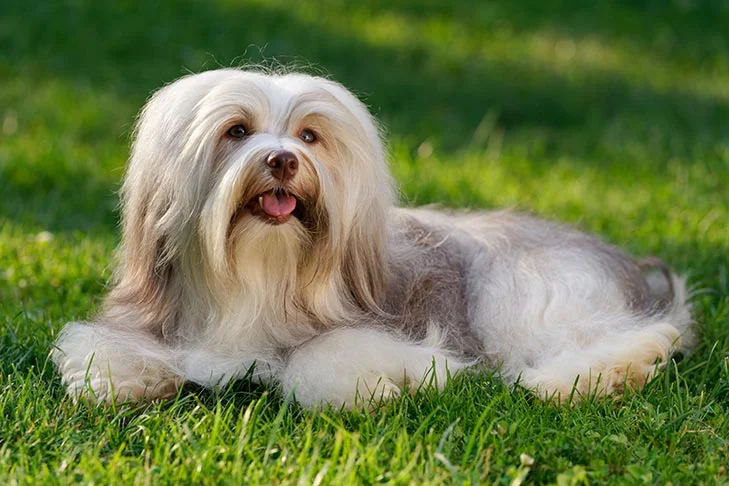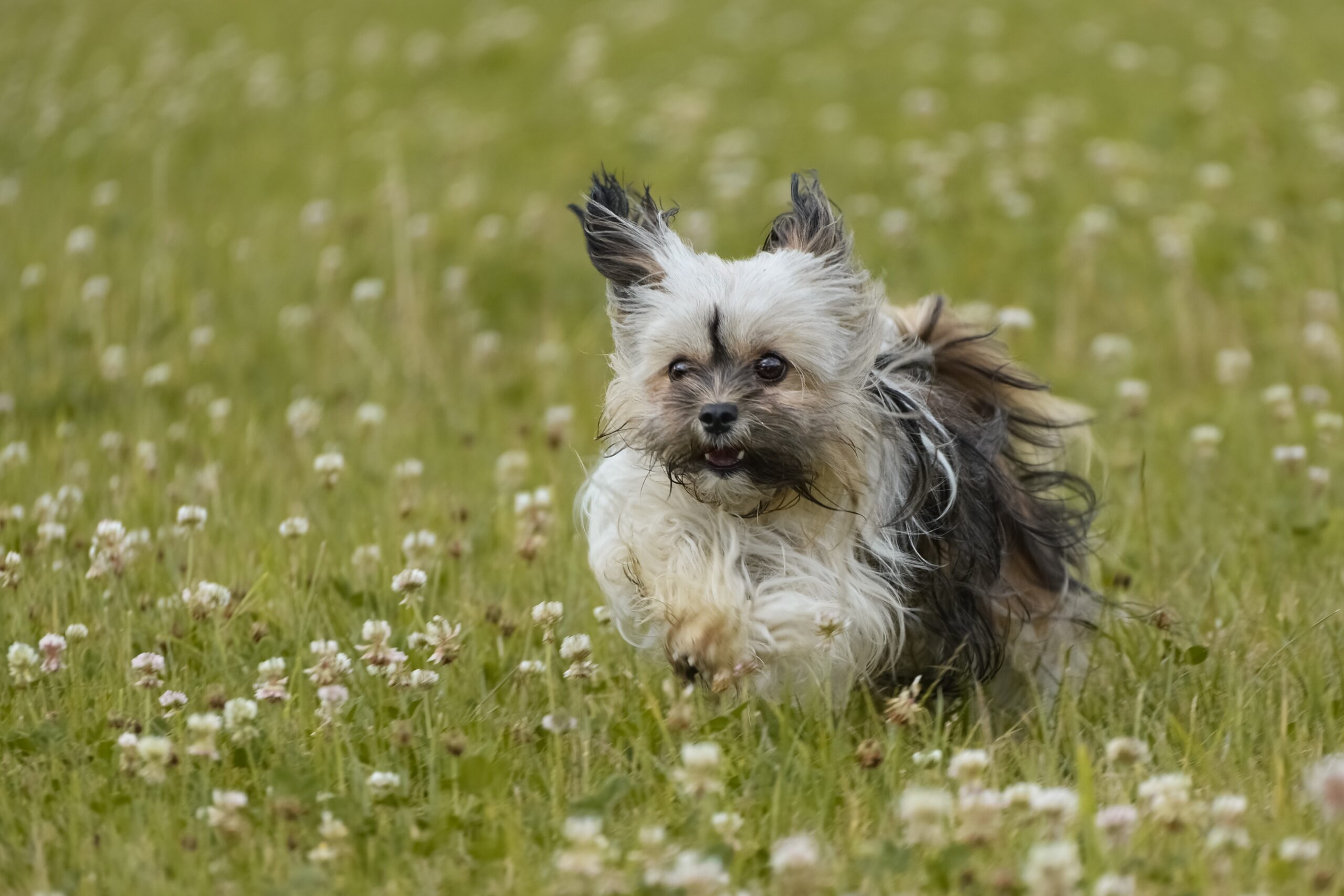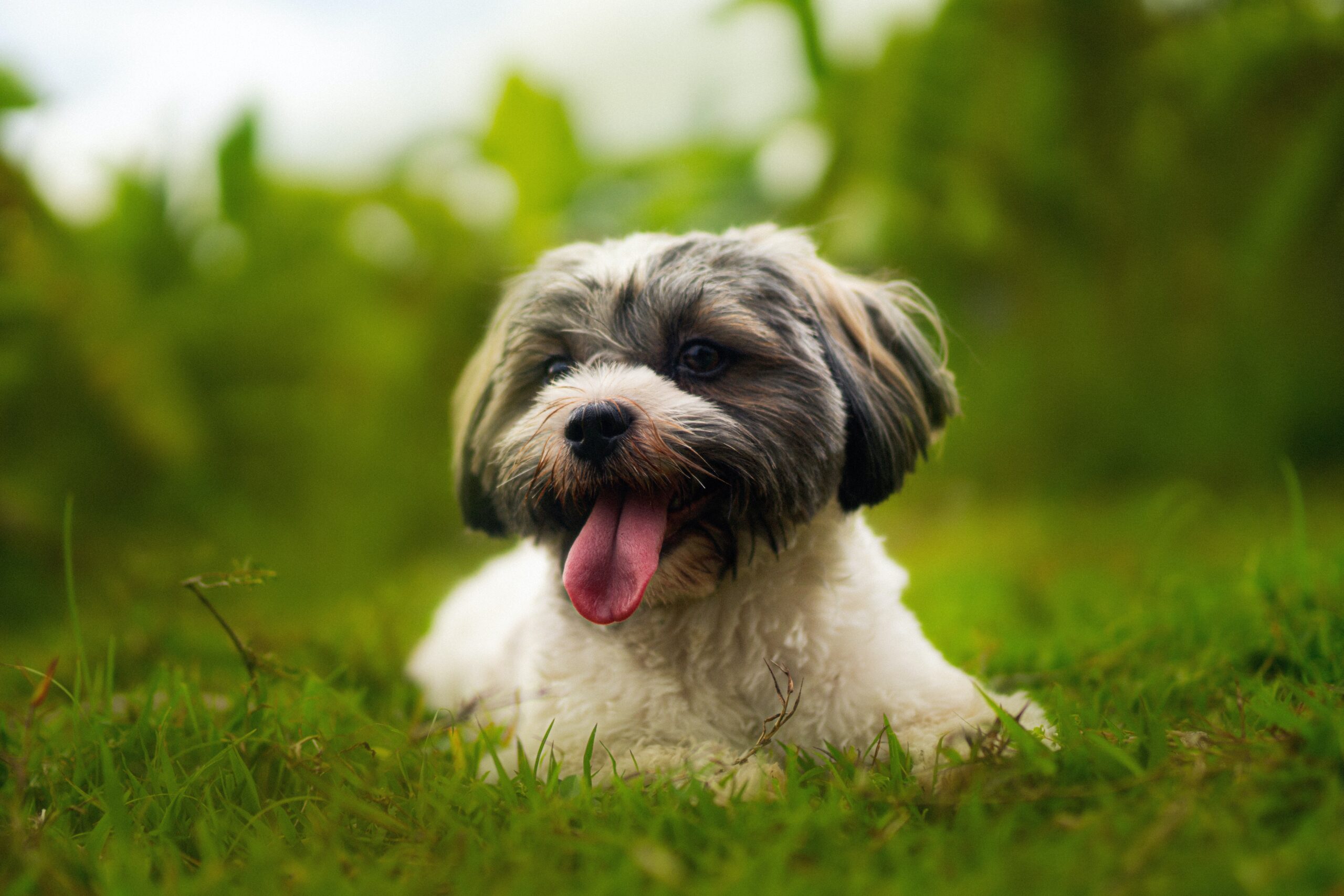The only breed of dog indigenous to Cuba is the Havanese, a happy little dog with a bounce in its stride and a glint in its large, brown eyes. These energetic and gregarious pets are growing in popularity, especially among urban Americans. The Havanese is known for its lovely, silky coat that comes in a range of colors and its curled-over tail. Some owners choose to knot the coat to look like a Puli, while others clip it short to speed up grooming. Happily, Havenese is adorable regardless of their hairstyle. Havanese make the perfect city dog because of their small but sturdy physique, adaptable disposition, and social skills, but they are happy anyplace they can draw fans of all ages. Havanese are innate trick dogs because they are intelligent, trainable extroverts with the comedic instincts of a born clown. Although they take their duty seriously and make good watchdogs, Havanese often limit their barking.
Havanese
Average sizes and life
expectancy of the breed.
Height
8.5-11.5 inches
Weight
7-13 pounds
Life Expectancy
14-16 years
Breed Traits & Characteristics
About the Breed

Owning a dog is not just a privilege; it’s a responsibility. They depend on us for, at minimum, food and shelter, and deserve much more. When you take a dog into your life, you need to understand the commitment that dog ownership entails.
 Health
Health
Recommended Health Tests From the National Breed Club:
- Patella Evaluation
- Hip Evaluation
- BAER Testing
- Ophthalmologist Evaluation
 Grooming
Grooming
 Exercise
Exercise
 Training
Training
 Nutrition
Nutrition
History
The Havanese (single or plural, the name is the same) is a member of the old Bichon family of small, white dogs and is thought to have shared ancestors with the Bichon Frise and Maltese. These vivacious lapdogs have been traded by merchants on the high seas since the dawn of human civilization. Small, witty, non-productive dogs were among the things that distinguished royals and aristocracy from members of lesser social strata throughout history.
The Havanese, named after the capital city of Havana, where the breed had the greatest popularity, was the native lapdog of Cuba’s nobility and affluent planters. Depending on the source, the breed’s ancestors may have been brought to the island nation in the 1600s by Spanish colonization forces or Italian sea captains.
The breed, which was formerly known as the Blanquito de la Habana (Havana Silk Dog), was perfected over the course of its roughly 300 years in the lap of Cuban luxury, possibly through Poodle crossbreeding. The Communist takeover of Cuba in 1959 was a turning point in the history of the breed. Many wealthy Cubans who emigrated to America after Fidel Castro’s revolution carried their small dogs with them. The refugees conserved and continued the Havanese with the aid of American fanciers. The breed is becoming a well-liked option for picky pet owners everywhere.
Two of the most renowned authors in the world were among the famous Havanese owners. During his 20 years in Cuba, Ernest Hemingway succumbed to the Havanese charm. Tim was a small Havanese that Charles Dickens had around a century prior.




